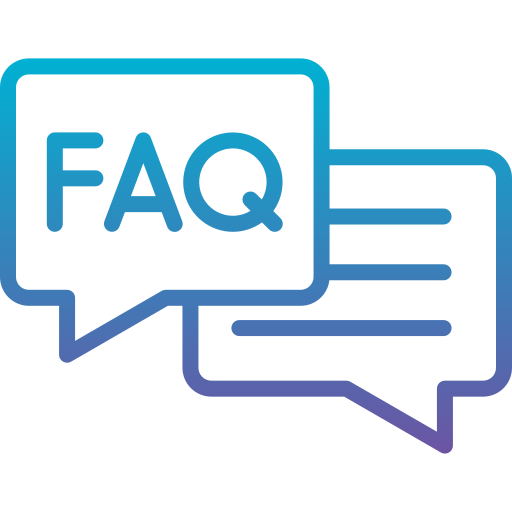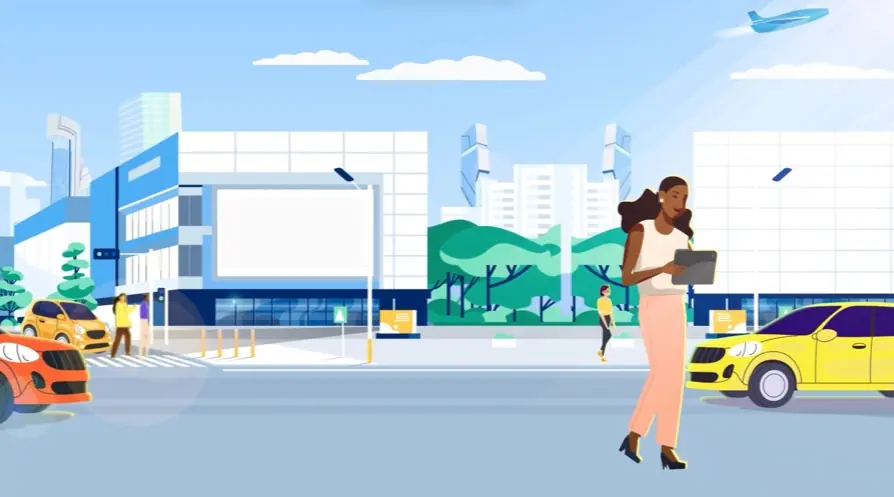
How should a feature demo video script be structured for optimal clarity?
Structure your feature demo video script using the problem-solution-benefit framework. Begin by highlighting the user's pain point, present the feature as the solution, and showcase its positive impact.
What best practices ensure effective software feature showcasing in walkthroughs?
Effective software feature showcasing utilizes clear visuals, concise explanations, and real-world applications. Highlight key functionalities through screen recordings, zoom-ins, and annotations.
How can onboarding videos effectively guide new users through key product features?
Onboarding videos guide new users step-by-step through essential product features. Combine screen recordings, voiceovers, and interactive elements for an engaging learning experience.
How can storytelling enhance engagement in feature explanation videos?
Storytelling transforms feature explanations into captivating narratives. Connect with your audience by weaving a relatable story around the feature's benefits.
What visual aids maximize clarity in a product function demo?
Visual aids like screen recordings, annotations, diagrams, and charts enhance clarity in product demos. Choose visuals that best illustrate the feature's workings.
How can existing assets be repurposed for creating compelling feature tutorials?
Repurpose existing assets like marketing materials and user manuals into compelling feature tutorials. Extract key information and visuals to develop concise videos.
How can animation clarify complex functionalities in a feature demo video?
Animation simplifies complex functionalities by visually demonstrating processes and interactions. Use animation to break down intricate concepts into digestible visuals.
What planning steps are crucial for a successful feature usage guide video series?
Planning a successful video series involves defining clear objectives, identifying the target audience, outlining key features, and establishing a consistent style.
How can feature walkthrough videos generate leads within a sales funnel?
Feature walkthrough videos generate leads by showcasing the product's value and prompting viewers to take action, such as signing up for a free trial.
What creative approaches can introduce new features effectively in demo videos?
Introduce new features creatively using eye-catching visuals, animations, and storytelling. Highlight the unique benefits and improvements.
How can a feature demo video's tone and style be tailored to a specific target audience?
Tailor the video's tone and style to resonate with your target audience. Consider their demographics, interests, and preferred communication style.
How can we ensure accessibility in our feature usage guide videos for all users?
Ensure accessibility by providing captions, transcripts, and audio descriptions. Consider users with visual or auditory impairments.
What are the core components of a successful product feature launch video?
A successful product feature launch video includes a clear introduction, feature demonstration, benefit showcase, and a compelling call to action.
How can customer onboarding experience be improved with effective feature walkthroughs?
Improve customer onboarding with feature walkthroughs that guide users through essential functionalities, address pain points, and provide helpful tips.
What are the key considerations when developing a concept for a feature demo video?
Key considerations for a feature demo video concept include target audience, key message, desired tone, visual style, and call to action. Align the concept with your overall marketing strategy. Typical production timelines range from 3-8 weeks, with pricing from $1000-$6000 depending on complexity.
Optimizing Video Length for Viewer Retention
Optimizing video length presents a crucial challenge for creators crafting a Feature Usage Guide Video. Balancing the need to convey comprehensive information with shrinking viewer attention spans directly impacts learning effectiveness and user adoption. Successfully navigating this balance requires understanding optimal lengths across different contexts and relentlessly focusing content for maximum impact within that timeframe.
Research consistently shows a preference for shorter content; videos under two minutes often yield the highest engagement. Viewership can drop significantly as videos extend beyond three minutes. However, for more complex topics requiring deeper explanation, aiming for a range of six to twelve minutes can maintain relatively steady audience retention before decline typically sets in after twelve minutes. Platform-specific length norms also dictate strategy; social media thrives on concise clips (15-30 seconds), while platforms like YouTube or LinkedIn accommodate slightly longer, more detailed content (5-15 minutes and 1-2 minutes respectively).
Ultimately, the viewer retention rate serves as a vital metric. This percentage reveals how much of the video viewers consume. A high retention rate indicates strong viewer engagement and is a key factor in the video's success. Analyzing retention data identifies specific points where viewers disengage, offering actionable insights to refine pacing, clarity, or content focus. This data-driven approach allows for continuous improvement, ensuring videos hold attention and effectively guide users.
To maximize viewership capture, prioritize hooking the audience within the initial seconds using compelling visuals or directly addressing a core user problem.
For complex topics, break down steps logically and filter out tangential information, scripting to focus strictly on helping users achieve a specific goal within the software.
Leverage user segmentation or personalized video elements to tailor content scope and relevance, ensuring viewers only see information most applicable to their needs, thereby managing video length effectively.
Employ A/B testing to compare different video lengths for the same feature or concept, using data to identify the optimal duration that balances comprehensive information delivery with audience watch-through rates.
By strategically optimizing length based on content complexity, platform, and viewer data, creators can ensure their guides are not just informative but also genuinely watched and acted upon.
Why Advids for Feature Usage Guide Video?
At Advids, we create compelling Feature Usage Guide Videos that drive results. Our blend of creative storytelling, advanced technology, and proven experience ensures your vision translates into effective animation. We've completed over 3400 successful projects for clients ranging from startups to Fortune 500 companies, including brands like Razorpay, Ola, Mercedes, the United Nations, Continental, and Mercer. Our dedication to client satisfaction is evident in our 109+ five-star Google reviews.
Unlocking the Power of Feature Usage Guide Video:
Targeted Solutions: We craft customized Feature Usage Guide Videos, tailoring each project to your brand, style, and target audience. We've produced between 185 and 470 Feature Usage Guide Videos specifically.
Engaging Narratives: Our animators and storytellers weave captivating narratives that resonate with viewers and drive action, clearly demonstrating how to use your product's features.
Impactful Results: Feature Usage Guide Videos simplify complex functionalities, increasing user engagement and adoption.
Our Expertise & Collaborative Approach:
12+ Years of Experience: Our extensive experience ensures your Feature Usage Guide Video effectively communicates the value of your product's features.
Collaborative Partnership: We work closely with you from concept to completion, ensuring your vision is realized in the final animation.
Strategic Communication: We prioritize understanding your needs, target audience, and brand identity to create impactful Feature Usage Guide Videos.
Cutting-Edge Technology & Proven Success:
State-of-the-Art Technology: We utilize industry-leading software and techniques to create visually stunning and impactful videos.
Trusted by Industry Leaders: Our client roster reflects our commitment to delivering high-quality Feature Usage Guide Videos that achieve business objectives.
Client Satisfaction Guaranteed: Our numerous five-star reviews highlight our talent, creativity, and dedication to client satisfaction.
Ready to unlock the potential of Feature Usage Guide Video for your business with the latest video design trends of 2024? Let Advids be your trusted partner in transforming your ideas into engaging and effective animated experiences.
Checkout some of the projects and work our team at Advids has been producing:
What is a Feature Usage Guide Video?
A Feature Usage Guide Video is a type of video that provides users with step-by-step instructions, demonstrations, and tips on how to effectively use a product or service. These videos are designed to make it easier for users to understand and utilize the product's features, ultimately leading to a more positive and efficient user experience.
Feature Usage Guide Videos can be used in a variety of contexts, such as onboarding new users, showcasing specific features, addressing common user challenges , and providing best practices and tips for maximizing product effectiveness. They are particularly valuable for products with complex functionalities or those that require a certain level of technical expertise.
What do top Feature Usage Guide Videos have in common?
mastering feature usage guide videos requires a strategic approach to maximize viewer engagement and understanding.
Ideal Viewer Profile - Tailor your video's language and complexity to your audience's tech proficiency. Use personas to guide your approach.
- Feature Prioritization - Focus on the 2-3 most valuable features, avoiding overwhelming viewers with too much information. Prioritize based on user feedback and analytics.
- Structured Storytelling - Employ a beginning, middle, and end structure, with a clear problem, solution, and benefit. Use a narrative to connect with viewers.
- Intuitive User Journey - Use visual cues and annotations to guide viewers through the interface. Emphasize ease of use and efficiency.
- High-Quality Screencasts - Use professional-grade screen recording software and editing to ensure clarity and visual appeal. Edit for conciseness.
- Compelling Visuals - Use infographics, animations, and other visuals to break up text and enhance understanding. Use a consistent visual style .
- Problem-Solution Focus - Clearly define the user's pain point and demonstrate how the feature alleviates it. Use before-and-after examples.
- Practical Demonstrations - Show the feature in action within realistic scenarios. Use diverse examples to increase relatability.
- Clear Call to Action - Provide specific, actionable steps for viewers to take after watching. Include links and resources.
- Measurable Results - Use data and statistics to showcase the feature's impact. Highlight key performance indicators (KPIs).
What makes Feature Usage Guide Video effective?
Informative Feature Usage Guide Videos aim to make the learning process as easy and enjoyable as possible. They use screen recordings, animations, and on-screen text, along with showing the feature in use within compelling, relatable scenarios, and clear, concise, and visually distinct steps to break down complex concepts and make them more accessible to users. Deeply understanding user knowledge levels and tech proficiency is crucial for tailoring the videos language and complexity. A clear introduction, logical progression of steps, and concise conclusion are crucial. Avoid jargon and use plain language accessible to all users.
Engaging Feature Usage Guide Videos are designed to keep viewers interested and motivated to learn. They use quizzes, polls, and calls to action, user narratives or case studies, and humor to enhance engagement. Incorporate interactive elements like branching scenarios or clickable hotspots within the video for personalized learning paths. Pre-release testing with target users identifies areas for improvement. utilize A/B testing on different video versions to identify optimal pacing, content, and engagement strategies. Maintain a consistent pace and use visually engaging editing techniques to keep viewers engaged. Employ professional-grade graphics, transitions, and color palettes to maintain viewer interest.
Comprehensive Feature Usage Guide Videos are driven by a clear understanding of specific user personas and their needs. They are designed to provide users with the information and guidance they need to effectively utilize a product or service. Include closed captions, transcripts, and alternative text for visuals. Consider offering multiple language options. Weave a narrative thread throughout the video, connecting steps and concepts to create a cohesive and memorable learning experience. End with multiple, strategically placed calls to action, guiding viewers on their next steps with clear links and resources. Maintain a consistent brand voice and visual style throughout the video to reinforce professionalism and trust.
How long should your Feature Usage Guide Video be?
Optimize feature guide video length for maximum impact by aligning video type, content, and viewer engagement.
Pre-production Considerations for Determining Video Length:
- What's the feature's core functionality?
- Who is the intended user persona?
- How many steps are in the feature workflow?
- What visual style best suits the feature?
- Does the feature require a detailed explanation?
- What platform will host the video?
- Which funnel stage does the video target?
Feature usage guide video length guide
| Feature Usage Guide Types | Video Length | Use Case | Funnel |
|---|
| Screen Recording | 30-60 seconds | Concisely demonstrates feature functionality; ideal for simple features | Awareness/Consideration |
| Animated Screencast | 45-90 seconds | Highlights key steps with engaging visuals; suitable for moderately complex features | Consideration/Decision |
| Explainer Video | 60-90 seconds | Clearly explains the "why" behind the feature using visuals and narration | Consideration/Decision |
| Tutorial | 1-2 minutes | Provides step-by-step instructions; best for complex features requiring detailed guidance | Decision/Action |
| How-To Guide | 1-3 minutes | Offers comprehensive guidance with multiple scenarios; suitable for advanced features | Decision/Action/Retention |
How to create Feature Usage Guide Videos?
Crafting compelling feature usage guide videos requires a strategic approach. Mastering the pre-production and production phases ensures your video effectively communicates value and drives user engagement.
* Audience Definition - Tailor the video's complexity and language to match the audience's technical expertise. This ensures maximum comprehension.- Feature Selection - Focus on the most valuable features to showcase the software's core strengths. This maximizes impact.
- Scriptwriting - Use a conversational tone and break down complex processes into digestible steps. This improves clarity.
- Storyboarding - A detailed storyboard ensures a smooth, logical flow, preventing viewer confusion. This enhances user experience.
- Visual Selection - Use consistent branding and high-quality visuals that reflect the software's professional image. This builds credibility.
- Screen Recording - Use high-resolution recordings with clear annotations to highlight key actions. This improves understanding.
- Animation Creation - Use animations to illustrate abstract concepts or complex workflows. This clarifies difficult processes.
- Live Action Filming - Showcasing a user interacting with the software adds a human touch and builds trust. This increases engagement.
- Video Editing - Use smooth transitions and clear visual cues to guide the viewer through the demonstration. This improves navigation.
- CTA Integration - Place the call to action strategically at the end, making it easy to find and act upon. This maximizes conversions.
Measuring the Effectiveness of Your Feature Videos
Let's explore how to measure the effectiveness of our feature usage guide videos. Analyzing video performance provides valuable insights to refine content, boost engagement, and ultimately drive desired user actions. Think of these metrics as a window into user behavior, helping us understand what resonates with our audience and where we can improve.
Understanding these metrics is key to creating impactful videos. By analyzing these data points, we gain a deeper understanding of user behavior and can refine our video strategies for optimal results.
- Play Rate and Audience Retention: A high play rate coupled with strong audience retention suggests our content is engaging and easy to follow. For product demo videos, this is particularly crucial as it indicates whether viewers find the demonstration compelling. Drop-off points can highlight areas where we need to improve pacing or clarity.
- Conversion Rates and Feature Usage: These metrics demonstrate the direct impact of our videos on user behavior. Are our videos leading to increased sign-ups, purchases, or feature adoption? Tracking these metrics helps us understand the effectiveness of our calls to action and the overall value our videos provide.
- user feedback and Support Tickets: Direct feedback and a decrease in support tickets offer valuable qualitative insights. Effective training videos often lead to fewer support requests, indicating improved user understanding and satisfaction. Gathering user feedback through comments and surveys can further illuminate areas for improvement.
By regularly reviewing these metrics and adapting our video strategies accordingly, we can ensure our feature usage guide videos effectively communicate value, drive user engagement, and ultimately contribute to our overall business goals.
Using Data Visualization in Feature Usage Guide Videos
Let's explore how data visualization can transform your feature usage guides from informative to truly engaging. Think of it as adding a visual spark that not only clarifies complex information but also makes the learning process more enjoyable for your users. By presenting data in a visually appealing and digestible format, we can significantly enhance user comprehension and encourage deeper engagement with the software's capabilities.
Data visualization isn't just about pretty pictures; it's about effectively communicating value. Imagine showcasing the time saved by a new feature with a dynamic graph in your feature highlight videos, instantly demonstrating its impact. Or, picture an onboarding video where a progress bar visually tracks a user's setup completion, motivating them to continue.
- Show progress visually: Imagine a progress bar in onboarding videos, filling up as users complete setup steps, motivating them to continue.
- Simplify complex data: Transform raw numbers into easy-to-understand visuals. For example, compare "before" and "after" scenarios using a bar chart to highlight the feature's impact.
- Highlight key metrics: Showcase the value of a feature by visualizing its key performance indicators. In feature highlight videos, a line graph could demonstrate increased efficiency over time.
- Tell a story with data: Connect data points to create a narrative. For instance, animate a chart to show how a feature helps users achieve specific milestones, making the data more relatable and memorable.
By strategically incorporating data visualization, we can create feature usage guides that are not only informative but also visually compelling and memorable. This approach empowers users to quickly grasp the value of your software's features, leading to increased adoption and satisfaction.
The Role of Color in Feature Usage Guide Video Design
Let's dive into the fascinating world of color and its impact on our feature usage guide videos. We've talked about structure and content, but color is the secret sauce that ties everything together, influencing how viewers perceive and engage with our videos. Choosing the right colors can transform a simple screen recording into a captivating experience.
Color isn't just about aesthetics; it's a powerful communication tool. It helps us establish brand identity, guide viewers' attention, and even evoke specific emotions. Think about how calming a light blue background can be in a meditation app tutorial, or how a vibrant orange call to action button grabs attention in a software tutorial video.
- Brand Consistency: We want our videos to feel instantly recognizable, right? Using our brand colors consistently builds that familiarity and reinforces our professional image.
- Visual Hierarchy and Guiding Attention: And speaking of guiding the viewer's eye, color helps us emphasize important elements. A brightly colored button stands out against a neutral background, making it clear where viewers should click. This is especially crucial in explainer videos, where we want to simplify complex information.
- Emotional Impact and User Experience: We all know colors have the power to make us feel something. Blue builds trust, green signifies growth, and orange sparks excitement. Choosing colors aligned with our message enhances the overall user experience.
- User Feedback and Clarity: Color also plays a vital role in providing clear feedback. A green checkmark confirms a successful action, while a red warning icon alerts users to potential errors. This is essential in software tutorial videos, where clear guidance is key.
By understanding the psychology of color and applying these principles thoughtfully, we can create feature usage guide videos that are not only informative but also visually appealing and engaging.
Author & Editor Bio
A video producer with a passion for creating compelling video narratives, Jai Ghosh brings a wealth of experience to his role. His background in Digital Journalism and over 11 years of freelance media consulting inform his approach to video production. For the past 7 years, he has been a vital part of the Advids team, honing his expertise in video content planning, creation, and strategy.
His collaborative approach ensures that he works closely with clients, from startups to enterprises, to understand their communication goals and deliver impactful video solutions. He thrives on transforming ideas into engaging videos, whether it's a product demo, an educational explainer, or a brand story.
An avid reader of modern marketing literature, he keeps his knowledge current. Among his favorite reads from 2024 are "Balls Out Marketing" by Peter Roesler, "Give to Grow" by Mo Bunnell and "For the Culture" by Marcus Collins. His results-driven approach ensures that video content resonates with audiences and helps businesses flourish.




